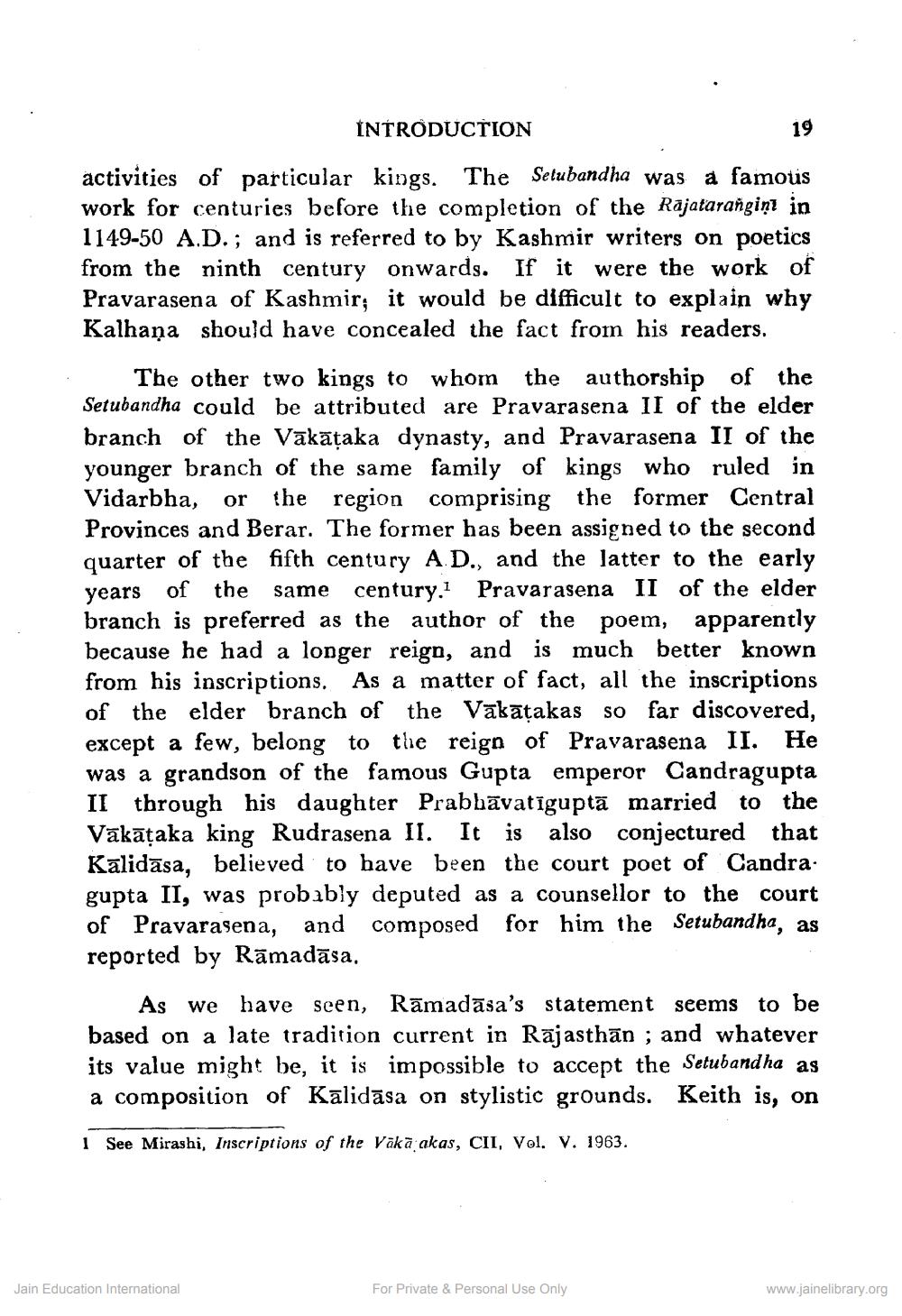________________
INTRODUCTION
19
activities of particular kings. The Setubandha was a famous work for centuries before the completion of the Rajatarañgim in 1149-50 A.D.; and is referred to by Kashmir writers on poetics from the ninth century onwards. If it were the work of Pravarasena of Kashmir; it would be difficult to explain why Kalhaņa should have concealed the fact from his readers.
The other two kings to whom the authorship of the Setubandha could be attributed are Pravarasena II of the elder branch of the Vākāțaka dynasty, and Pravarasena II of the younger branch of the same family of kings who ruled in Vidarbha, or the region comprising the former Central Provinces and Berar. The former has been assigned to the second quarter of the fifth century AD., and the latter to the early years of the same century. Pravarasena II of the elder branch is preferred as the author of the poem, apparently because he had a longer reign, and is much better known from his inscriptions. As a matter of fact, all the inscriptions of the elder branch of the Vākāțakas so far discovered, except a few, belong to the reign of Pravarasena II. He was a grandson of the famous Gupta emperor Candragupta II through his daughter Prabhāvatīguptā married to the Vākāțaka king Rudrasena II. It is also conjectured that Kalidāsa, believed to have been the court poet of Candra. gupta II, was probably deputed as a counsellor to the court of Pravarasena, and composed for him the Setubandha, as reported by Rāmadāsa.
As we have seen, Rāmadāsa's statement seems to be based on a late tradition current in Rājasthān ; and whatever its value might be, it is impossible to accept the Setubandha as a composition of Kālidāsa on stylistic grounds. Keith is, on
1 See Mirashi, Inscriptions of the Vākā akas, CII, Vol. V. 1963.
Jain Education International
For Private & Personal Use Only
www.jainelibrary.org




